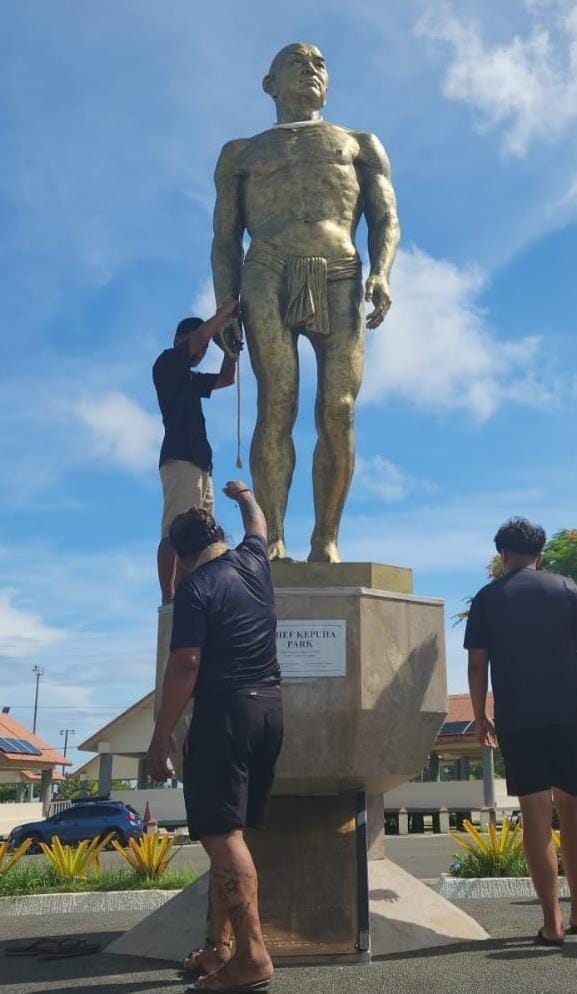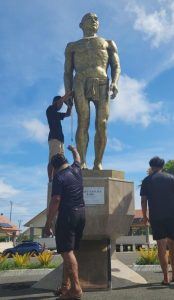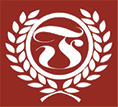
26 Jul Chief Kepuha, the Slingstone, and the Spirit of the 81st Liberation on Guam

As Guam celebrates its 81st Liberation Day, a powerful gesture was made in the heart of Hagåtña—one that honors both history and heritage. A sling and slingstone were placed into the hands of the iconic statue of Chief Kepuha, a move that bridges the past with the present in a way that speaks to the strength, identity, and unity of the Chamorro people.
Who Was Chief Kepuha?
Chief Kepuha was a high-ranking Chamorro chief from Hagåtña during the 1600s, remembered as the first to welcome Spanish missionaries to Guam. In 1668, he granted land to Jesuit priest Father Diego Luis de San Vitores to build the first Catholic church on the island. This act marked a pivotal moment in Guam’s history, ushering in the arrival of Christianity and the beginning of colonial rule.
While the arrival of the Spanish brought profound change, both positive and painful, Chief Kepuha remains a central figure in Guam’s story—a symbol of leadership, diplomacy, and cultural transition.
The Sling and Slingstone: Symbols of Strength
The addition of a sling and slingstone to Chief Kepuha’s statue is more than symbolic—it is a bold recognition of the warrior heritage of the Chamorro people. The acho’ atupat, or sling, was a traditional weapon used by Chamorro ancestors for hunting and warfare. Chamorro slingers were known for their precision and power, often able to strike targets at great distances.
The sling was not only a tool of defense, but a representation of skill, survival, and cultural pride. For generations, it has remained a powerful reminder of the resourcefulness and resilience of the people of the Marianas.
The Meaning of Liberation Day
Liberation Day, commemorated every July 21st, marks the day Guam was freed from Japanese occupation during World War II in 1944. For the people of Guam, Liberation Day is more than just a historical anniversary—it is a deeply emotional remembrance of suffering, sacrifice, and survival.
Thousands of Chamorros endured hardship during the occupation, with many families hiding in caves, facing forced labor, and witnessing unspeakable acts of violence. The arrival of American forces signaled the end of a brutal chapter and the beginning of rebuilding.
Today, Liberation Day is also a celebration of freedom, identity, and togetherness. Families gather along parade routes, set up tents, roast food, share stories, and pass traditions down to younger generations. It is a day that unites people from across the island and around the world.
Heritage and Unity
The gesture of placing a sling and stone in the hands of Chief Kepuha for the 81st Liberation Day reflects a growing movement to honor indigenous identity and revitalize cultural knowledge. It acknowledges that before colonization, the Chamorro people had their own systems of leadership, protection, and pride.
This act also serves as a reminder that Liberation is not just about the past—it’s about the present and future. It’s about bringing people together, celebrating family, and embracing the strength found in Chamorro culture.
For many families, this year’s celebration felt different—more meaningful. From the youngest kids to the oldest elders, there was a sense that something important was being remembered. A slingshot, a statue, a story—woven together on an island that continues to honor its past while stepping confidently into its future.

